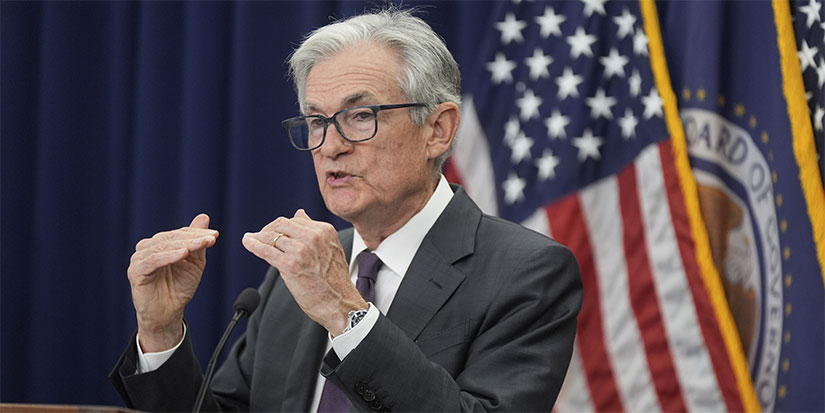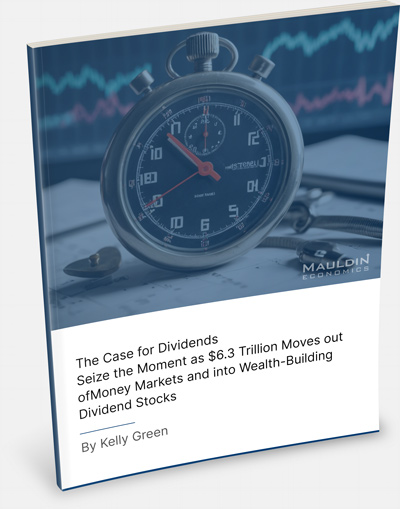
Lock In Your Entry Price Before It’s Too Late
-
 Kelly Green
Kelly Green
- |
- August 27, 2025
- |
- Comments
The metaphor of a magician’s hands can be applied to many things. One hand distracts the audience’s attention, while the other hand performs the trick. There’s the flourish and then there’s the function. Markets tend to work the same way.
Today is the day that analysts and investors have been waiting for the entire earnings season—earnings and updated Q3 guidance from NVIDIA Corp. (NVDA). With bated breath they are anxious to see if the numbers are worthy of this month’s record highs. The stock is up 33% since its last earnings release.
The company’s earnings matter to more than just NVDA investors. The stock’s $4.4 trillion market cap gives it incredible weight in the S&P 500. It’s also in the Nasdaq Composite and the Nasdaq 100. Investors use these indexes to gauge the overall market and make trades. NVDA directly affects the entire market.
That’s a rather crazy thought for a stock with a P/E of 58. Yep, investors will pay 58 times earnings for a piece of this tech giant. Will they profit? Only if they sell at the right time. Investors are caught up in capital gains excitement.
When that happens, the masses seem to forget about boring stable dividend stocks.
Don’t take this as a complaint. I love it when the markets ignore some of my favorite companies. When prices go down, yields go up… and that’s what I’m here for. However, here are a few things we don’t want to let get lost in the flourish.
|
I’m Watching the Other Hand
Four months ago, I asked “Are Dividend Cuts on the Horizon in 2025?” We know that common shares dividends are not guaranteed. They can be changed at any time based solely on the whims of the Board of Directors.
During the 2008–2009 financial crisis, about one in three S&P 500 companies with a dividend reduced their payouts. It took until 2012 for those dividends to return to pre-crisis levels.
In 2020, roughly 187 US-listed companies suspended or cut their dividends. Many have since been resumed. For some companies, though, the COVID impact on dividends still exists today.
By April, we knew 2025 would be a year full of uncertainties—tariffs, interest rates, executive orders, and others—which would force Boards to rethink their forecasts. A shift to greater business investment or fear-driven cash accumulation would take those dollars out of our pockets.
And this isn’t limited to just cuts or suspensions.
For the second quarter, the dollar amount of dividend decreases and suspensions across US domestic common shares totaled $2.3 billion. That was down 44% from the first quarter, and down 46% year over year.
That looks good, but it’s not the whole story.
Even though the dollar amount was lower, there were 38 instances of a dividend cut or suspension versus 21 last year.
And there’s more.
Like what you're reading?
Get this free newsletter in your inbox every Wednesday! Read our privacy policy here.
The shifting dividend landscape is something the mainstream financial media isn’t covering. They are too focused on NVDA and other tech giants. But how long will that last?
Interest Rate Changes Will Be Crucial
Once NVDA reports, investors will be on to the next big thing. Media headlines are already full of speculation about interest rate cuts. It doesn’t seem to be a question of if rates will be cut, but a matter of when.
Interest rate expectations then trickle through the market and affect the demand for dividend stocks.
The yield on the S&P 500 is about 1.25%. That is down from 1.36% last month, and below its 1.81% long-term average. It’s not hard to find “high yield” with that as your baseline.
It’s more common for dividend investors to use CD rates as a benchmark. These insured bank accounts guarantee that investor sentiment can’t touch your capital, and a Board of Directors can’t alter your yield. If you can lock in 4% insured by the FDIC, why look for short-term holdings with comparable yields?
When interest rates fall, investors will take a closer look at dividend stocks.
Greater demand for dividend stocks should push their prices higher. Those of us that have continued to build our positions in dividend stocks will be glad to grab some capital gains when that happens. But it also means attractive entry prices will disappear.
There’s no need to change our strategy as dividends work in all markets. However, always be ready to use any data in the market to your advantage.
Right now, I’m personally adding to my positions that I think investors are punishing unfairly. This includes consumer staples that are simply being overlooked. And shipping companies that are being impacted in the short-term by uncertainty. I don’t see either of these industries losing their economic importance any time soon.
Now is a good time to identify stocks that have run up over the past year that you might want to unload in case interest rates drop and cause prices to drop as well. When investors start to view their holdings through this lens they will lock in capital gains and chase yield.
What do you consider an “above-average” yield? Do you use the yield on the S&P 500 or CDs for comparison, or something else? Have you considered changing your short-term investing strategy based on expected interest rate cuts? Send me a note and let me know.
|
For more income, now and in the future,

Kelly Green

 Kelly Green
Kelly Green
